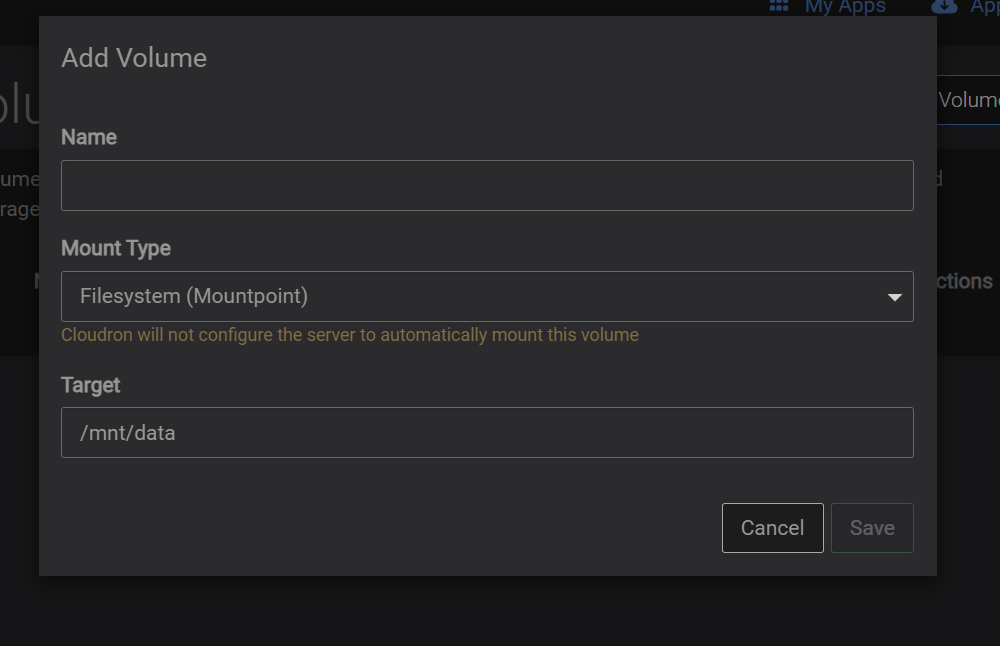How to setup object storage for your applications on Cloudron
-
Object Storage is a lot cheaper than Block Storage. OS is efficient for larger files, such as videos or perhaps high-resolution images.
How can we setup Cloudron so that our applications use block-storage to keep their data?
For example, PeerTube and Immich are video hosting and image galleries that you can host with Cloudron. Usually, they would use the (probably somewhat limited and expensive) storage available on your Virtual Private Server. How could Cloudron be setup so that applications like these would keep their video and image files on a 3rd party, Object Storage solution, such as e2 Idrive ?
The Cloudron "Volumes" section doesn't seem to have any option for something like an AWS endpoint.

-
Object Storage and Block Storage (with filesystems) are quite different technology wise, despite both being able to store data. Cloudron cannot provide realistically a Block Storage interface for apps on an Object Store, so in order to use Object Storage in an app, the app itself needs to be able to take advantage of that.
-
L LoudLemur has marked this topic as solved on
-
Object Storage and Block Storage (with filesystems) are quite different technology wise, despite both being able to store data. Cloudron cannot provide realistically a Block Storage interface for apps on an Object Store, so in order to use Object Storage in an app, the app itself needs to be able to take advantage of that.
-
Lots of us are already using object storage to store data for such apps.
All my instances of PeerTube, Mastodon and Pixelfed all store data on Scaleway S3 buckets
-
Lots of us are already using object storage to store data for such apps.
All my instances of PeerTube, Mastodon and Pixelfed all store data on Scaleway S3 buckets
@jdaviescoates said in How to setup object storage for your applications on Cloudron:
Lots of us are already using object storage to store data for such apps.
All my instances of PeerTube, Mastodon and Pixelfed all store data on Scaleway S3 buckets
How do you manage to do this? Is it because these applications support object storage?
-
@jdaviescoates said in How to setup object storage for your applications on Cloudron:
Lots of us are already using object storage to store data for such apps.
All my instances of PeerTube, Mastodon and Pixelfed all store data on Scaleway S3 buckets
How do you manage to do this? Is it because these applications support object storage?
@LoudLemur said in How to setup object storage for your applications on Cloudron:
Is it because these applications support object storage?
Yes. You just have to add the correct values to a config file. If you search on here you should find details of people's setups.
-
You could also use rclone together with mergerfs to create some kind of layer.
like
/mnt/remote
/mnt/local
/mnt/mergerfsYou then write stuff locally, and it'll upload stuff in the background to your remote storage.
You can look for inspiration @ https://github.com/l3uddz/cloudplow
